Varanasi: Diving “head first” into India (not literally)
Our first city in India happened to be India’s oldest and one of the oldest living cities in the world, dating back about 5,000 years ago. Varanasi is arguably the center of the Hindu world and Aaron and I were ready to jump head first into India: it’s culture and everything we had been excited to see and warned about. But first…
Getting to India
Our ride(s) to our next country came with a number of vehicles of transportation and surprises along the way. We headed from our hostel in Chitwan, Nepal to the bus station in the morning via pick up truck. Surprising to us, we boarded a tiny and tricked out bus, not the tourist type bus we expected. Aaron and I barely fit on the seat together and the ride would be about 6 hours until we got to our stop. When we arrived to the stop, it was close to the boarder but not close enough – we still had about 4 KM to go. It was hot and the streets were lined with dirt so we jumped onto a bike rickshaw to the boarder. The ride would cost us about $2 – well worth it. When we arrived, we had our passports checked and walked a bit to find a new bus that would take us to the train station to get us to our destination. This bus would take us 3 hours and when we arrived at the train station it was starting to get dark. Aaron and I had arrived unprepared without tickets for the train. We located the ticket office and backtracked about 1KM to the ticket office only to find it closed. Apparently, the ticket office shuts down after 2pm on Sunday. We started to get nervous but found a tourist office “willing” to sell us tickets for about double the price, we bought them happily for the 11pm departure. The train however arrived at around 2am.
The station itself was an awakening to India. Hundreds of people, children, and dogs lined the front and inside the train station. They lied on the floor, sometimes on top of each other and sometimes with a cloth sheet or with sheet of package good wrappers or without anything at all. The station stank of urine. It was old, dirty and dimly lit. We boarded our “first class” cabin, not as fancy as it sounds and it would be another 9 hours until we arrived at our stop. We’re now pretty pro at the whole India rail/train station thing, but we were certainly confused, concerned and second guessing ourselves about when it was our stop – there are no announcements and the signs are hard to see, if they are there at all. But we finally made it. It was around 8am when we arrived. We headed into the old city to our hotel by auto rickshaw. The driver did his best to explain to us that he could only take us so far because auto rickshaws couldn’t go behind a certain point in the old city, but we didn’t understand that part.
Throughout the ride I held on tight, sometimes screeching as traffic was busy. No, busy isn’t the right word. Insane is more like it. Auto rickshaws, cars, buses, bicycles, motorbikes, bicycle rickshaws, carts, pedestrians, cows, dogs, trash and rocks and pieces of road ran throughout the street. No one going in any conformed direction or pace. Motorbikes would be mere centimeters away from each other or other vehicles. And every vehicle could honked…consistently. It never stopped. The honks would come from every direction. When the auto rickshaw couldn’t go any further – we were dropped off in a crazy intersection. Not knowing where we were we then hopped into a bicycle rickshaw and headed towards the hotel. But then again we were told to get out as this is as far as it goes for him. So he left us as well, confused and fairly lost in this environment. I mean honestly, where the hell were we? So we started to ask around. A local old man led us through narrow passages of crowded streets once again filled with people, some chanting, some laying down, some praying and again with the dogs and cows everywhere where we arrived at our hotel.
Finally a, 23 hour journey later: 2 bus rides, 1 overnight train, 2 bike rickshaws, 1 truck, 1 auto rickshaw and several minutes of walking. It was time to lay down.
Now about this city we came so far to see.
Varanasi in Utter Pradesh (U.P.)…
We stayed in the old city of Varanasi at an awesome hotel that reaches out over the river overlooks the ghats. The first thing we did after our long journey was shower and then head to what would become our daily ritual: The Blue Lassi.
The Blue Lassi
The Blue Lassi was our daily refuge from the havoc. Here we could watch all the chaos through the raised store, settled on a bench around other travelers. Each day we would come and try a different lassi. Apple, pomegranate, banana, papaya, and combinations of the fruit. Lassis are an art here, a standing family tradition that has continued for over 80 years. From here we would usually talk about what we wanted to do for the day.
Getting Around Varanasi:
The narrow streets are a labrinyth winding lanes you often get lost in. To add to the confusion they are crowded, filled with practically naked wet old Indian men, women holding flower and rice offerings and praying, locals going about on their motor bikes honking their horn not caring to share the streets, boys on bicycles, cows walking about or just laying in the middle of the road, street dogs often in packs and occasionally a dead body being held above the heads of it’s carriers who are chanting and jingling bells. The scene was quite intense, yet here, you could stop in a shop for an hour to watch the streets and see 2-3 go by, and so it didn’t bother you after awhile.
If you are walking the streets, it’s better to yield to oncoming traffic, or push your way through. Be quick and decisive. Stand strong in your decision, otherwise you won’t be going anywhere, or worse trampled.
The Ghats
The ghats are the major attraction to the holy city. They sit at the city level and have steps that lead down to the holy river. Varanasi has around 80 ghats. Each having a name and purpose of worship.
We were visiting during shoulder season so the water was down far enough that we could explore each ghat, but not down enough to walk ghat to ghat by continuous sidewalk. Apparently during rainy season some of the ghats are completely swallowed up by the river and we saw men pumping the water to clear them.
At the ghats we would see mostly men, some women, and cows for that matter bathing in the murky/polluted water. It felt a little weird being an observer to what is a very holy and personal experience. We tried to be quiet and as invisible as possible, but sometimes it was hard to resist a photo opp.
The Boats
Aaron and I took 2 boat rides. One in the afternoon and one in the early AM for morning/sunrise prayer. We made some friends with our boat mates and they gave us an overview on Varanasi and the ghats. Whether it was the language or the mere explanation that went over my head, I understood only a third of it, but they were nice people who cared that we got the experience of the ancient holy city and understood it’s history.
The People
They were all over! We were told that most people come to Varanasi sick, wishing to die here. Hindus believe that bathing in the Ganges remits sins and that dying here ensures the release of a person’s soul from the cycle of its transmigrations. Thus, many Hindus arrive here for dying. It seems many of the locals were there to take in these sick people and care for them until they die. Then they will perform a ceremony on the banks of the Manikarnika ghat (also known simply as the burning ghat), set the body afire to cremate and push it out onto the river.
The other locals, also spiritual, will help you bath and pray with you to wash your sins away. They also work and lead prayers at the temples, such as the Golden Temple. The Golden Temple is an important Hindu temple dedicated to Shiva – one of Hindus 3 MAIN gods. One night we watched a famous spiritual performance at the Dasaswamedh Ghat, one of the holiest of the Varanasi ghats. The famous performance, Ganga aarti takes place every evening and it is viewed by tourists of all kinds: other Indians and non-natives. We didn’t even try to understand, but we stood and watched it in it’s entirety and after lit a lotus flower, said a prayer, made a wish and sent it into the river.
The Food
How can you begin to talk about any place in India without mentioning the food. We did a lot of eating here, mostly vegetarian Indian curries, that were WAY better than we’d ever had at home. The restaurant and shops permeated vibrant curry smells that would leak into the streets to lure us in. We found ourselves eating 4-5 times a day. We’ll talk about food throughout our India posts as it has surely been a highlight of the country.
Varanasi is a place of sensory overload: the smells of fresh flowers, curry, urine and cow shit; the traffic and crowds; and noises from chanting to vehicle horns. We had heard how crazy and chaotic this place was. Even that it is a love it/hate it kind of place. And it’s true, it can be a lot for the faint-hearted. But once again, our time on the road has desensitized us from a lot of things that may drive people away. I took away a sense of connected community here. Indians as a nation, praying together and carrying for the sick and dying together. Praying and singing together. It was a real experience for me and I really loved it.
Varanasi was one of my favorite cities of India. It was a strong introduction of what to expect over the next 5 weeks here and we were excited!

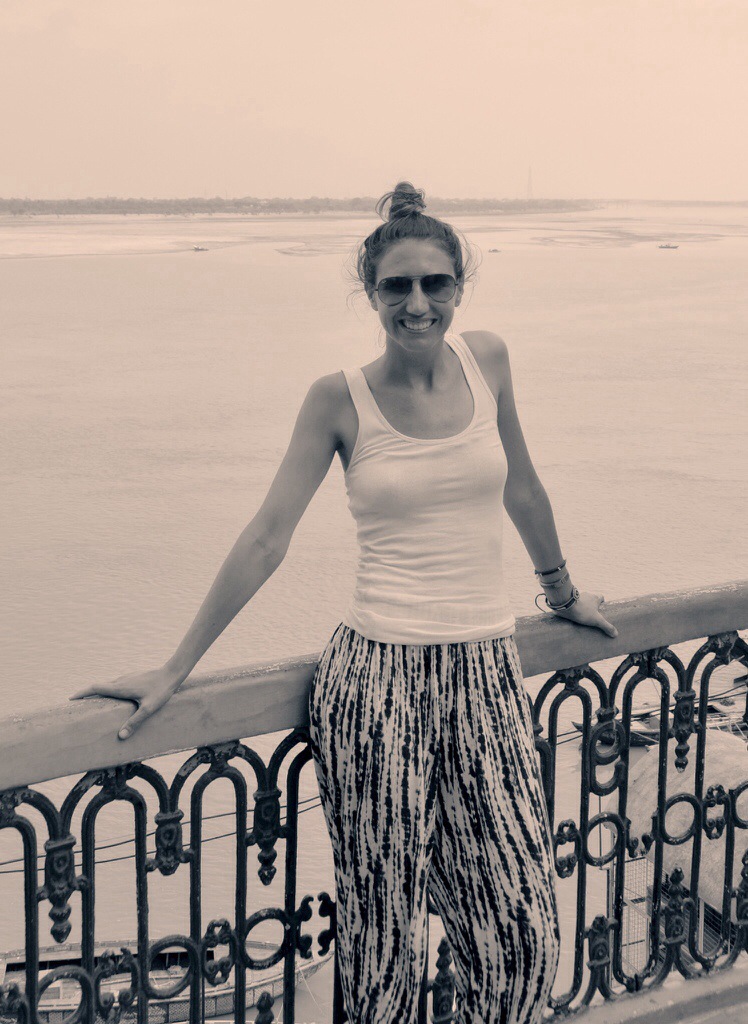
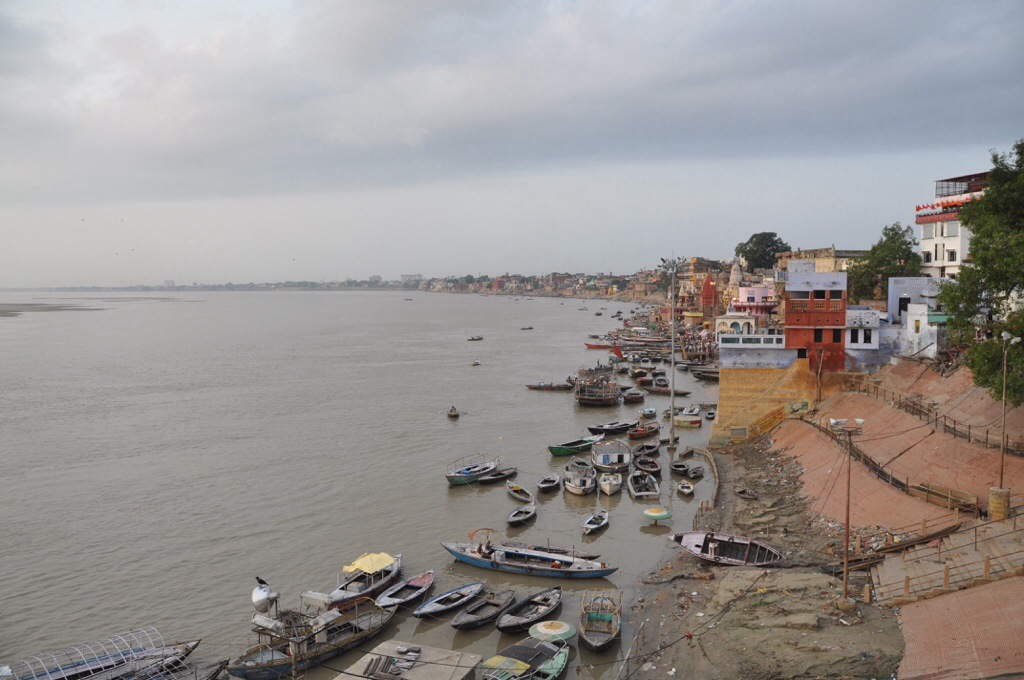
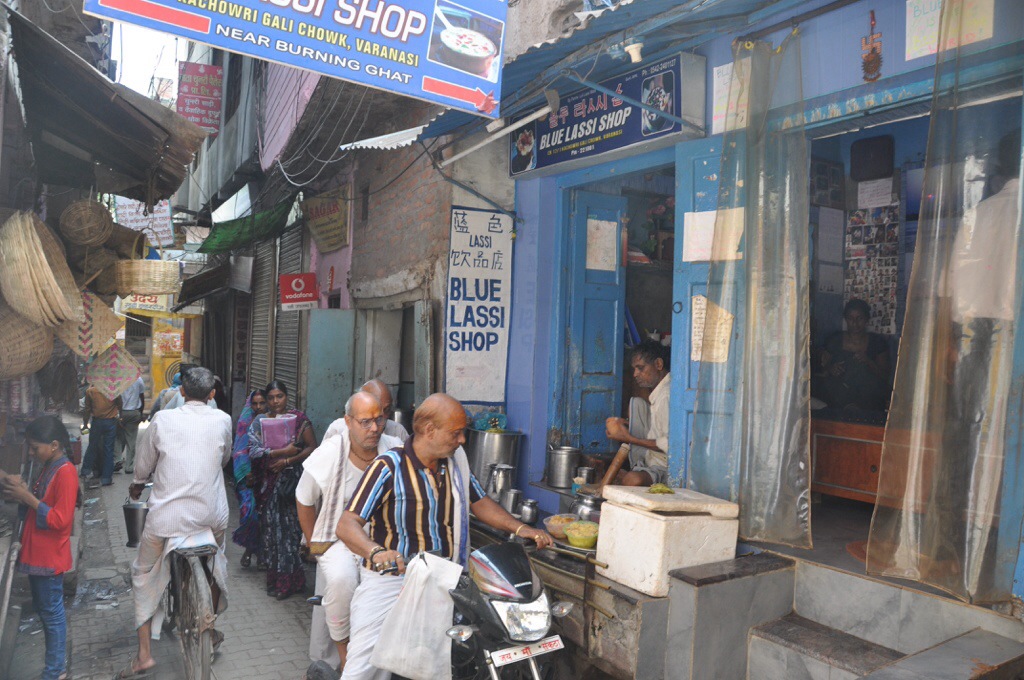
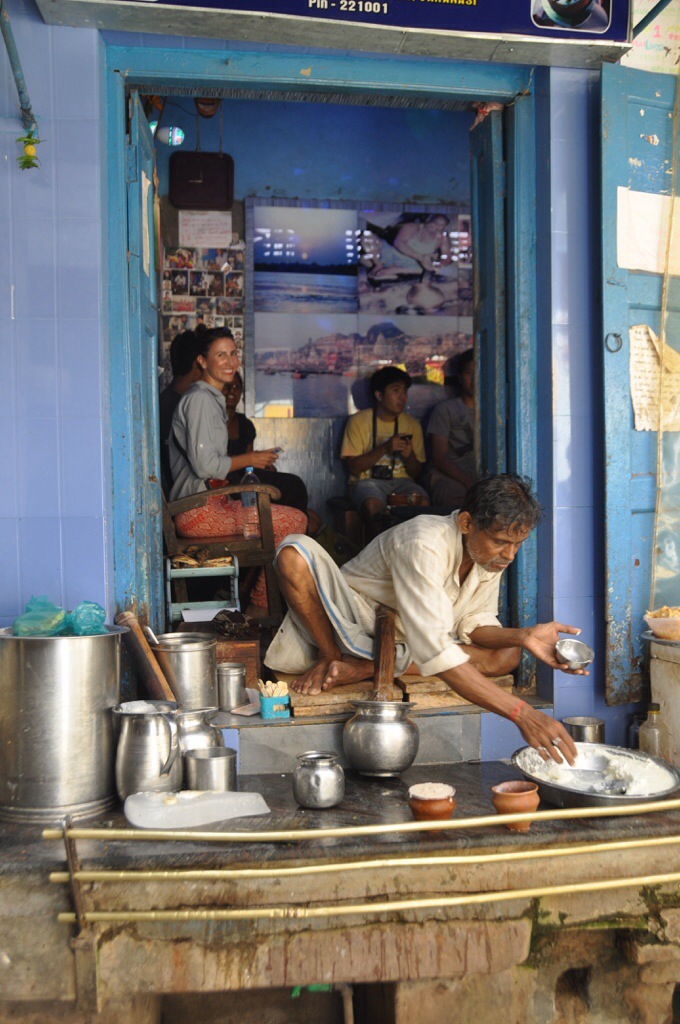

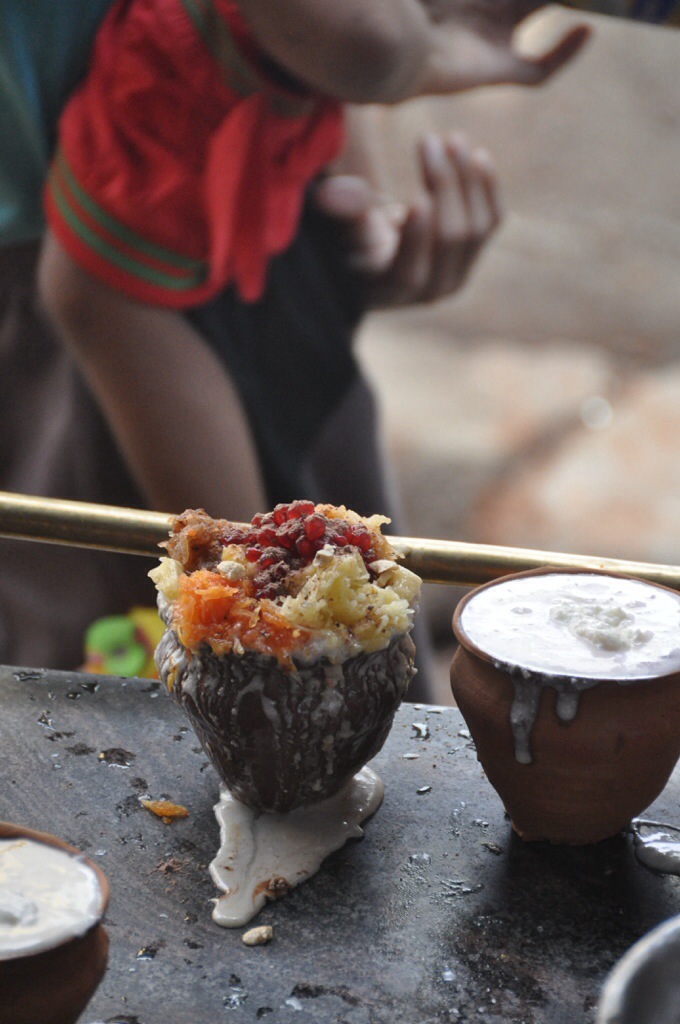
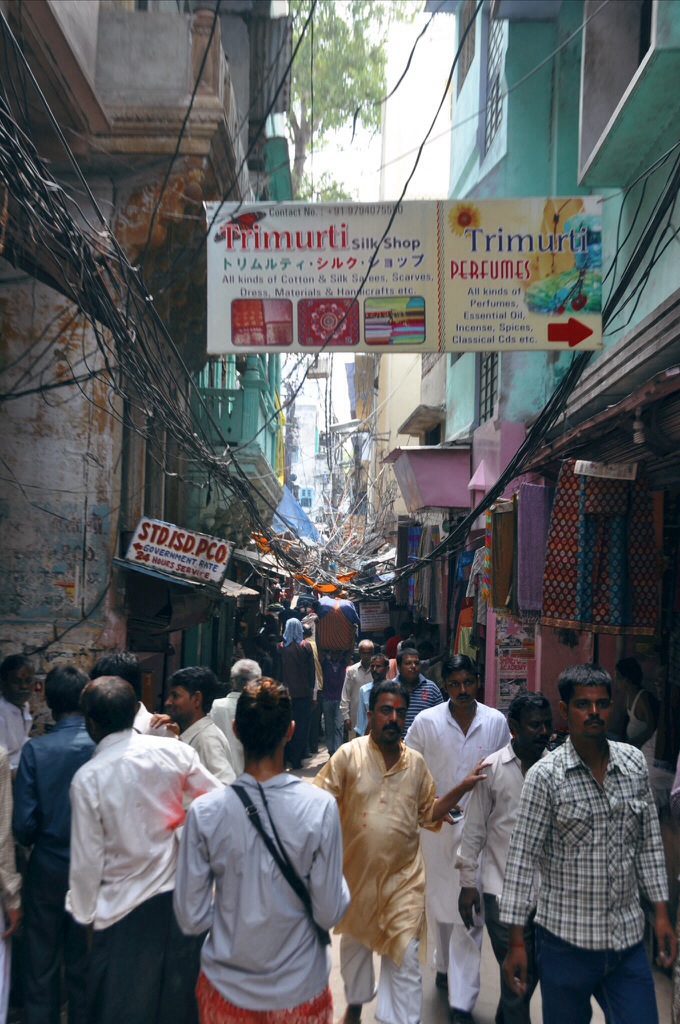
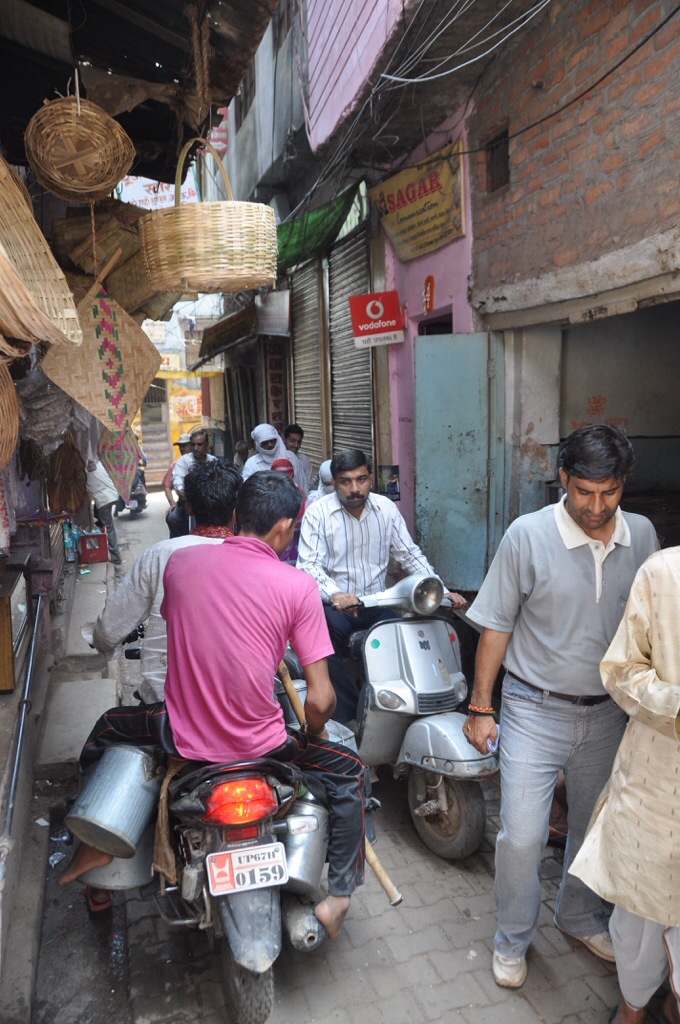
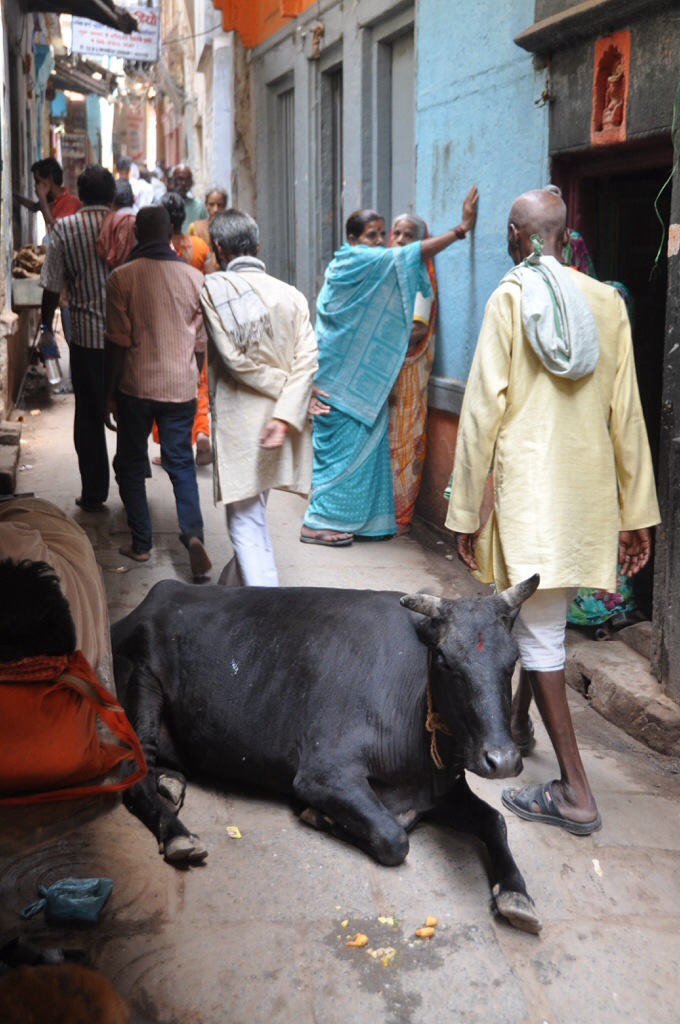
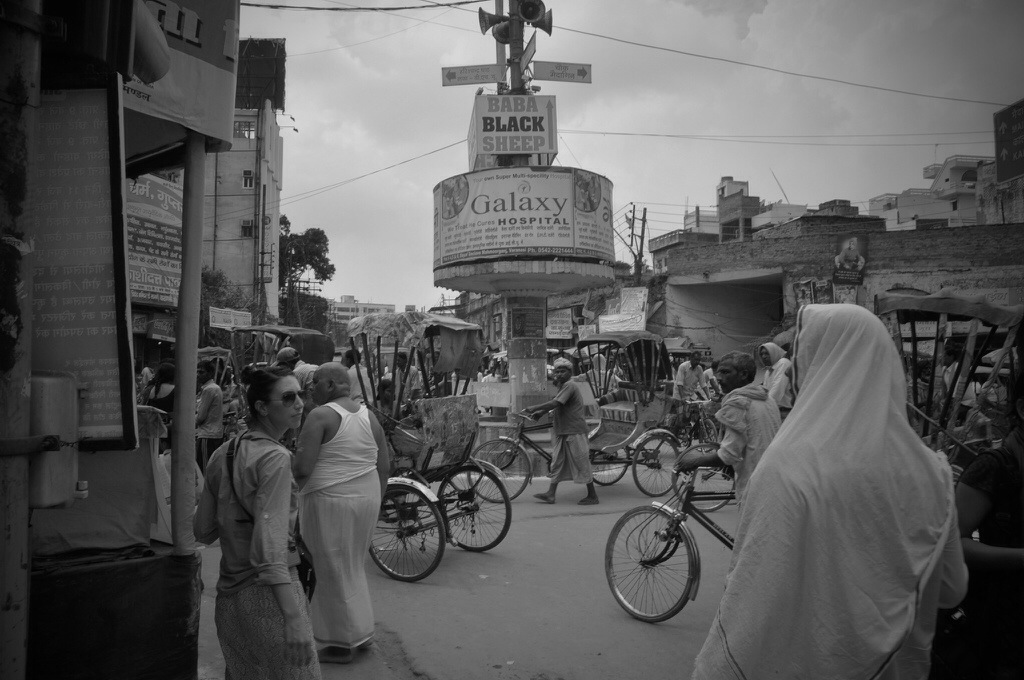
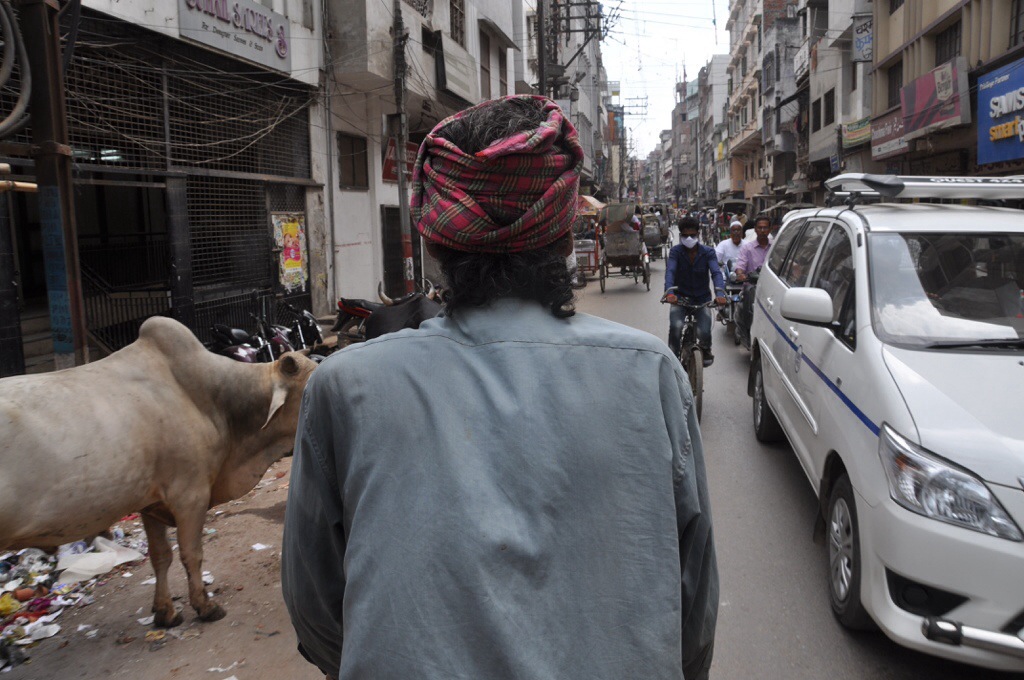
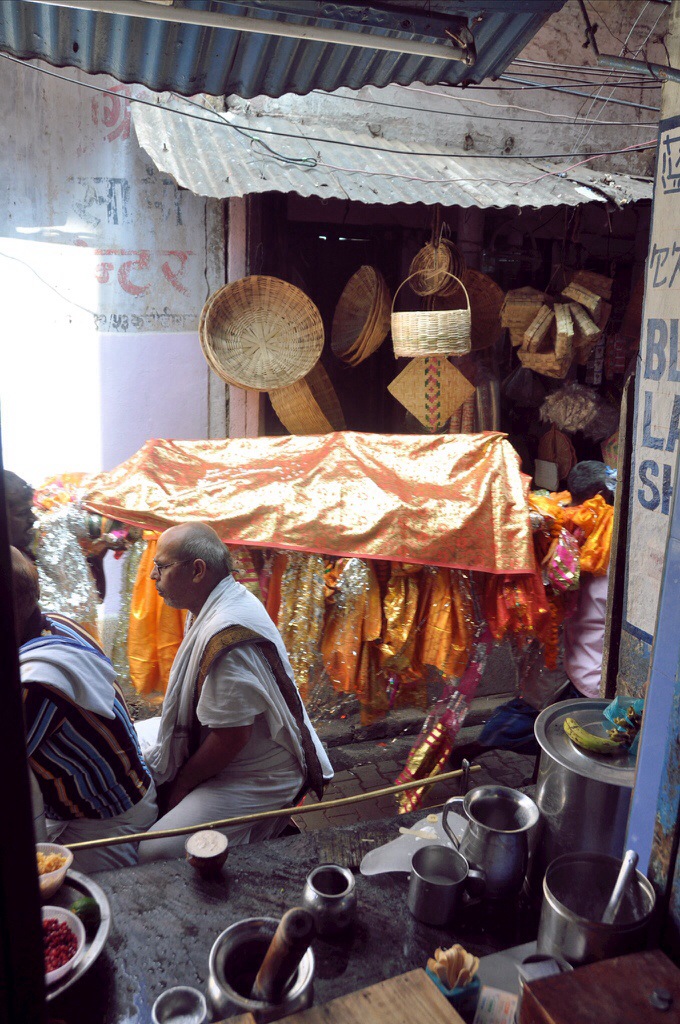
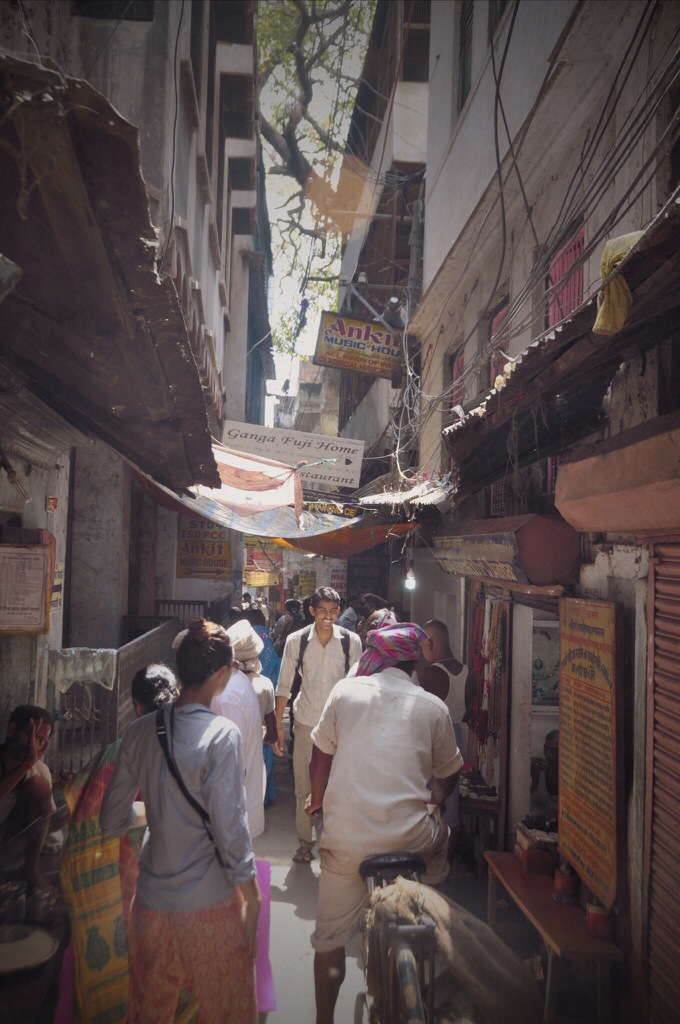
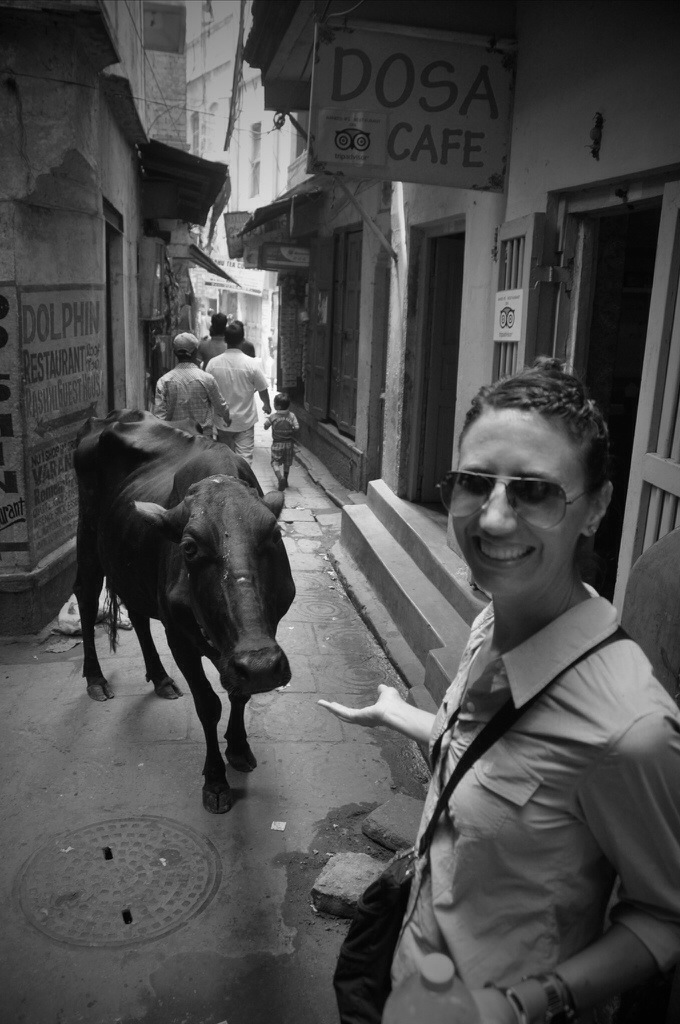
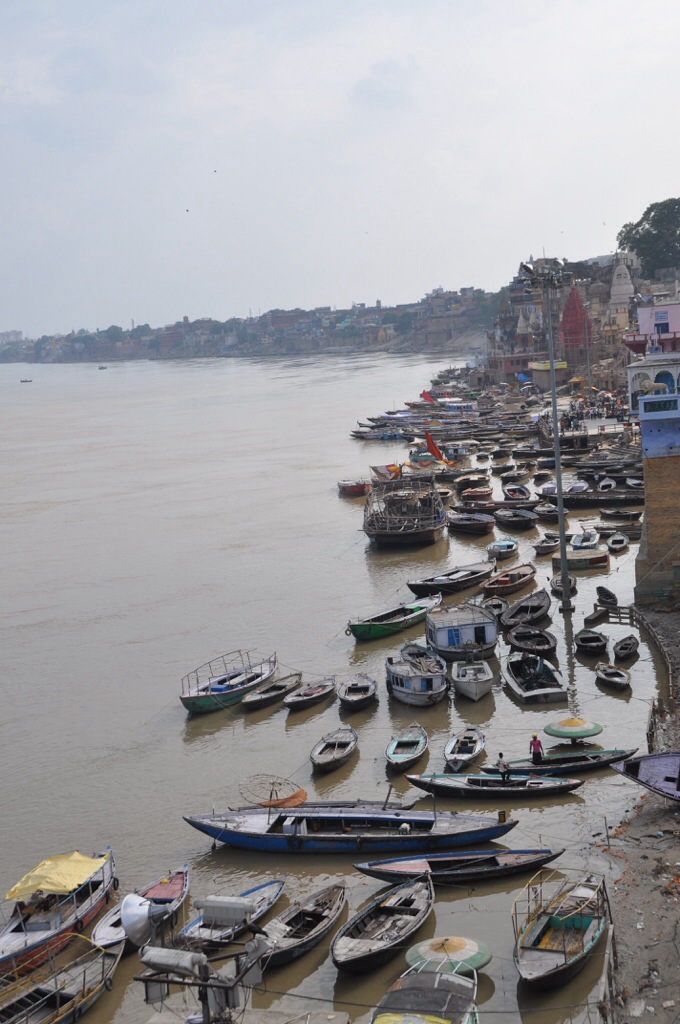
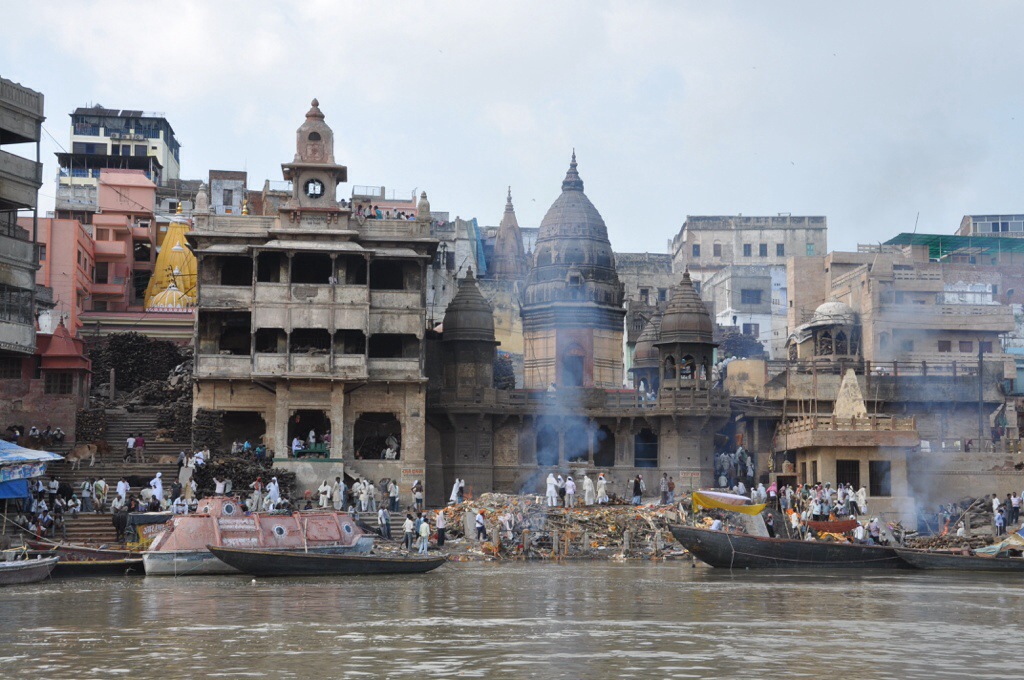
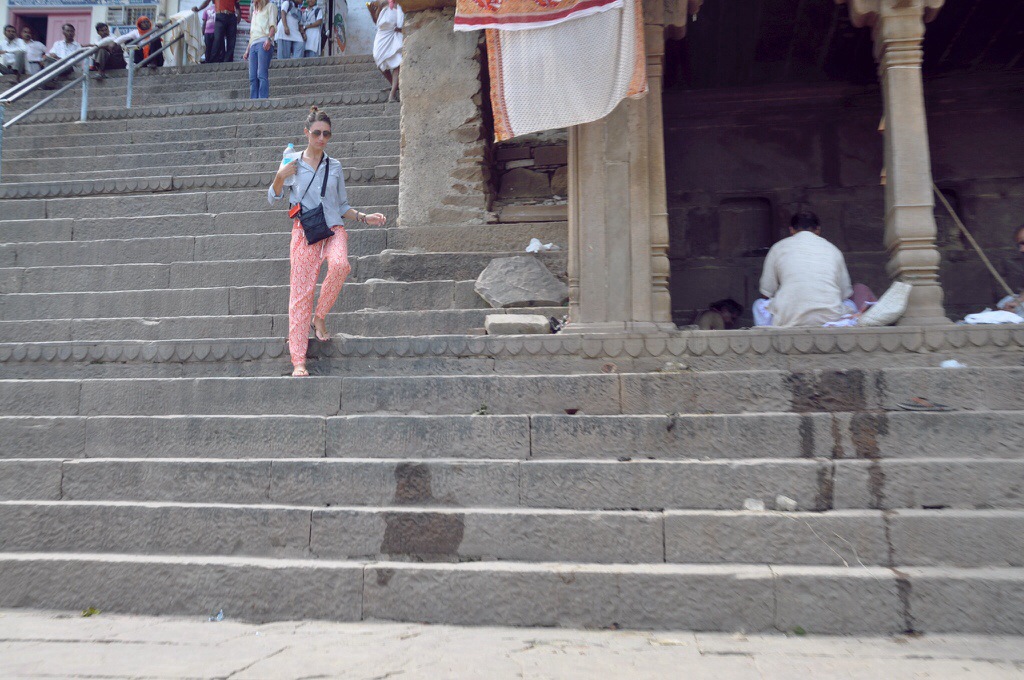
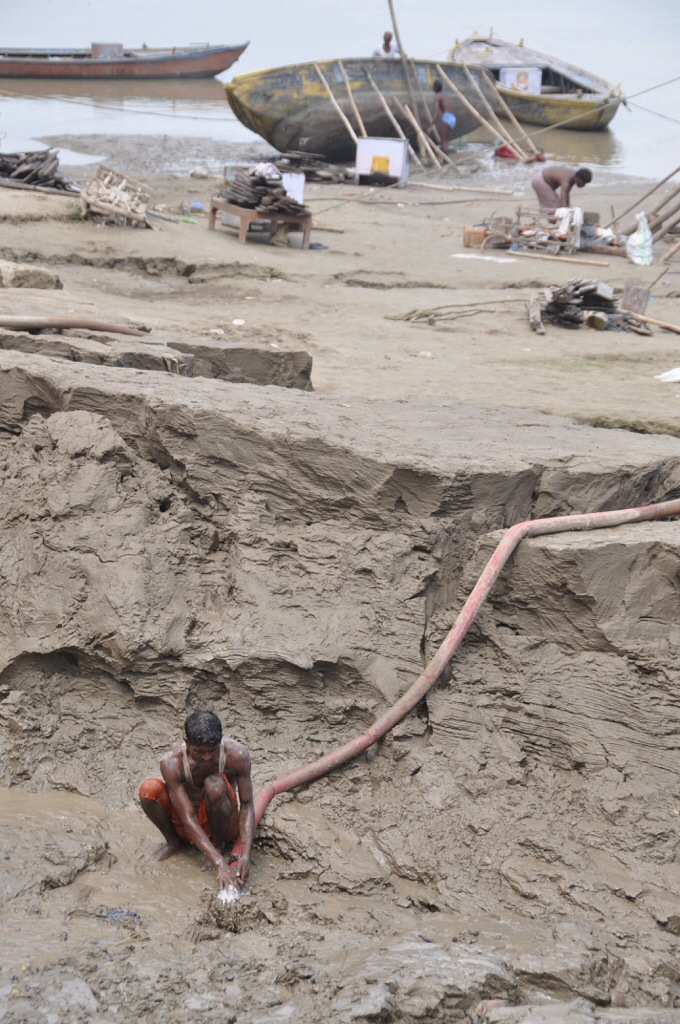
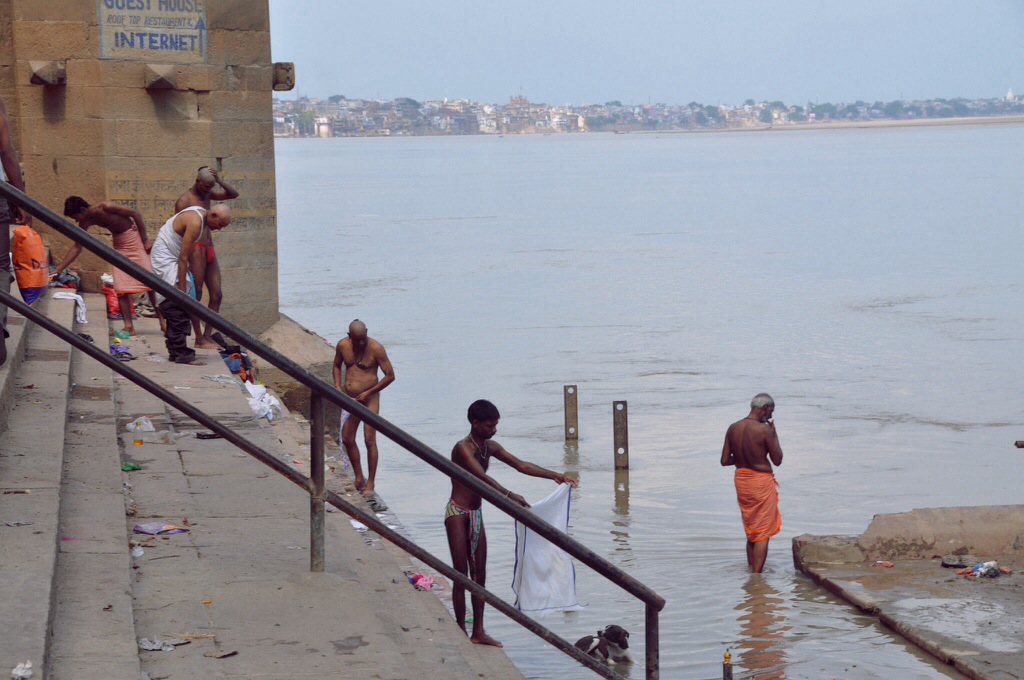
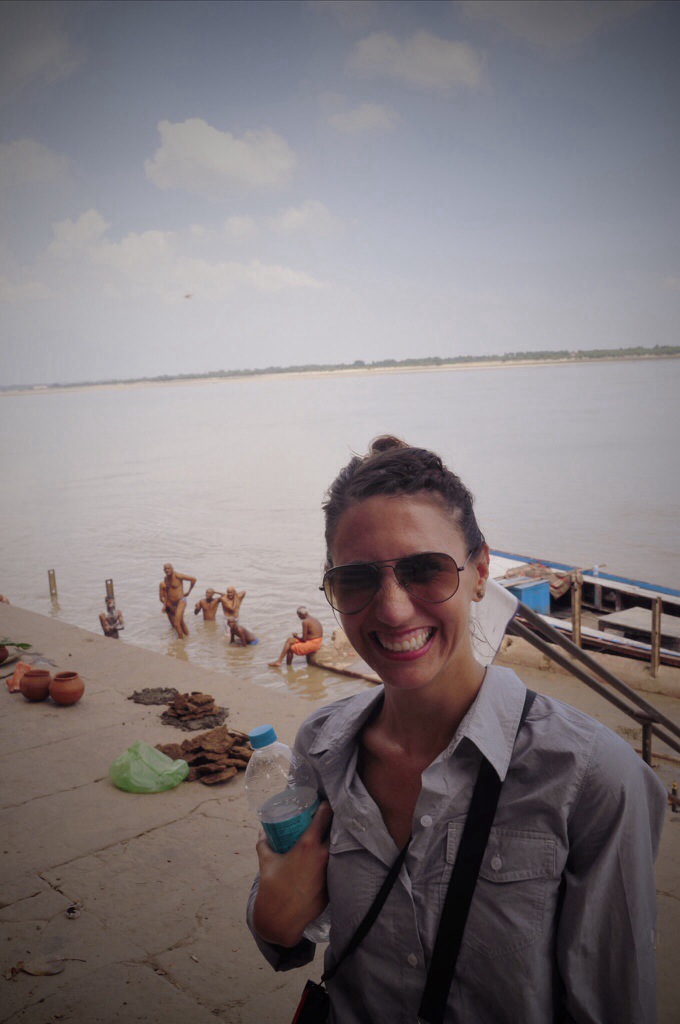
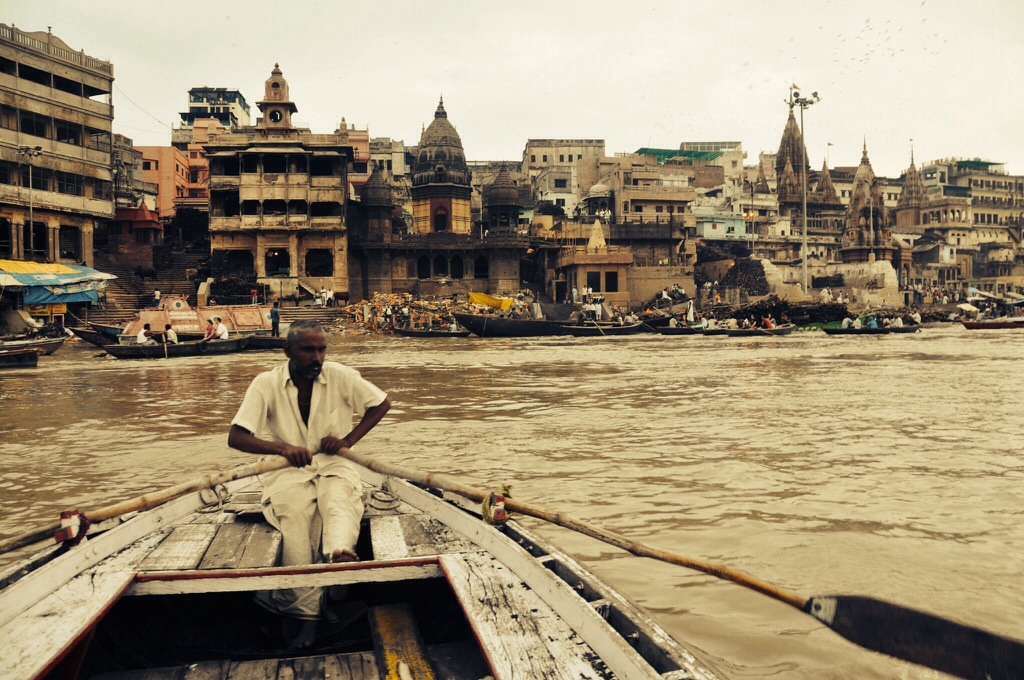
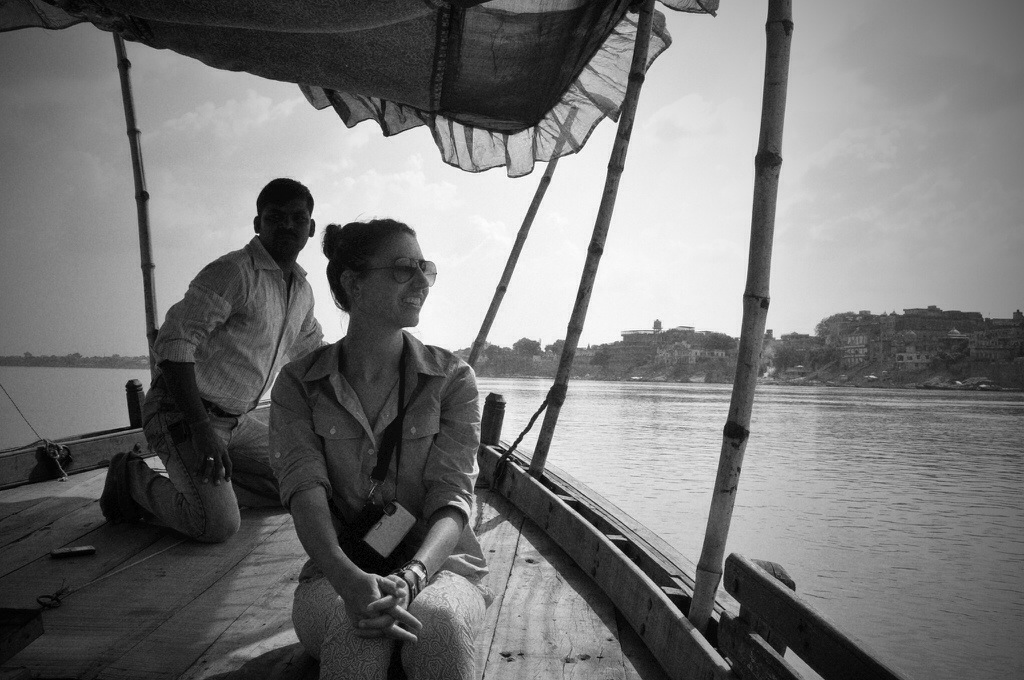
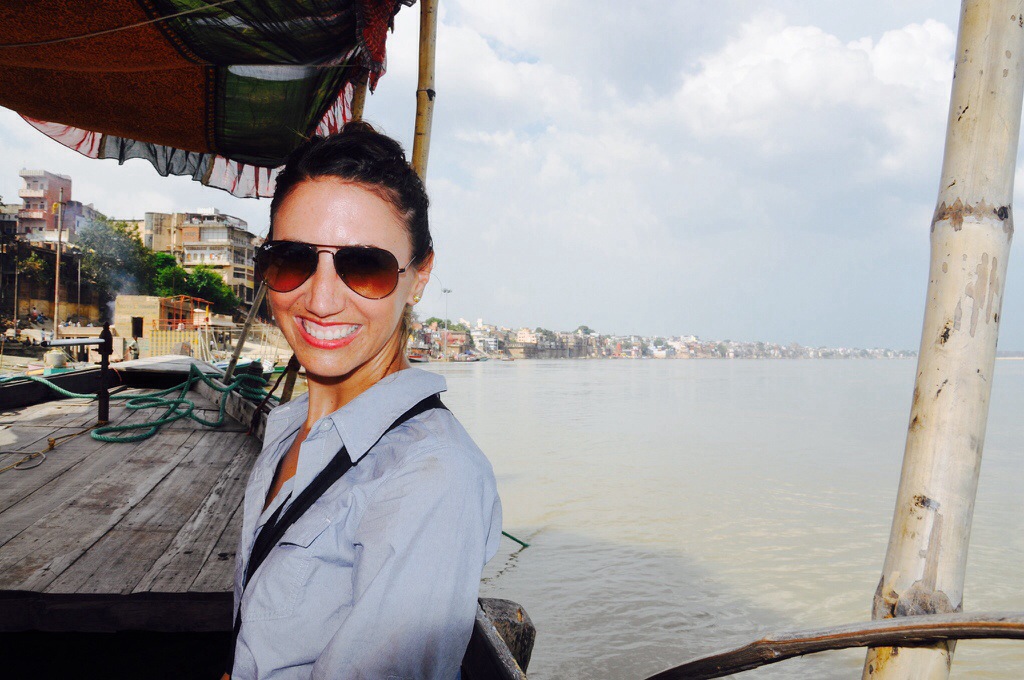
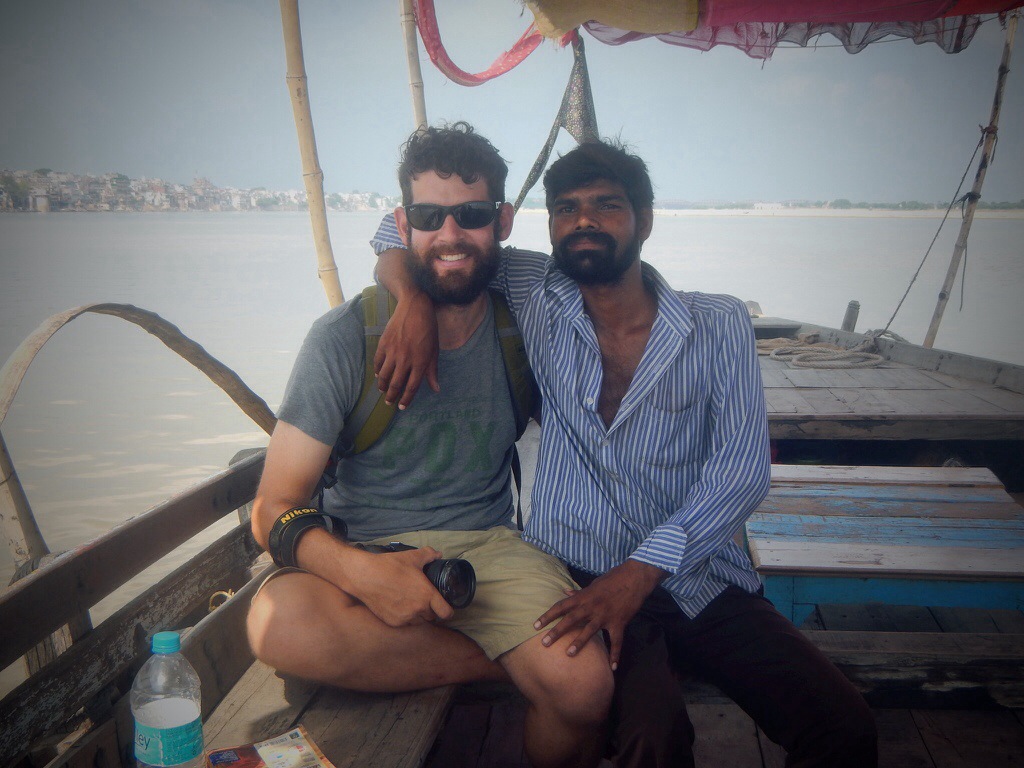
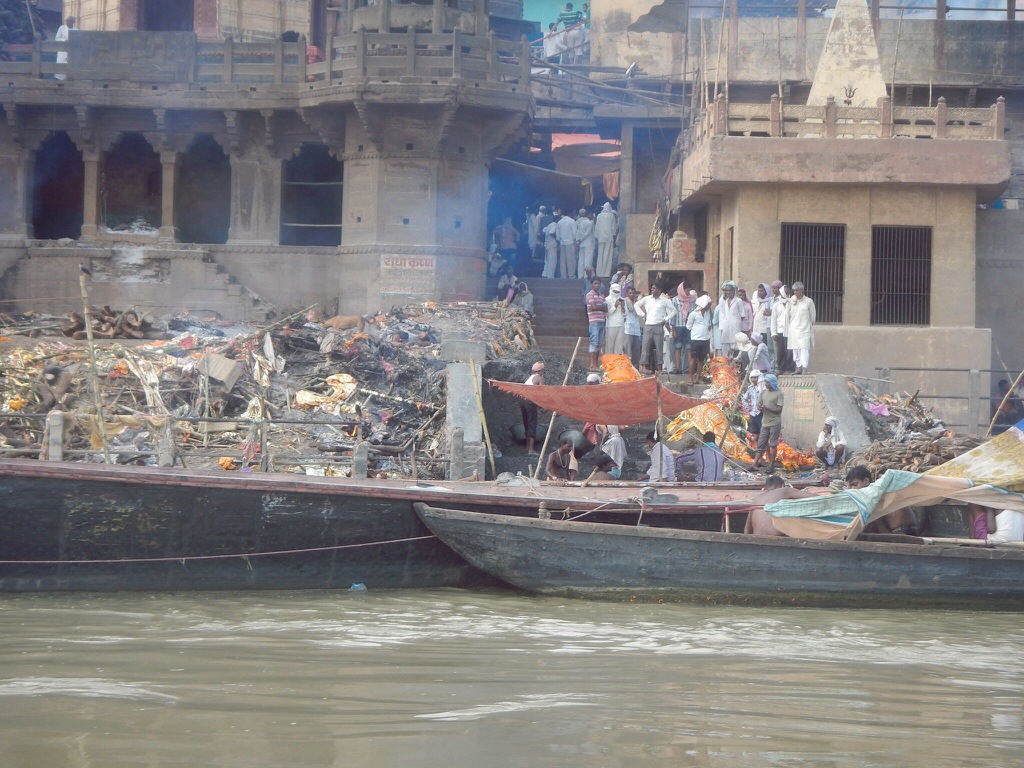
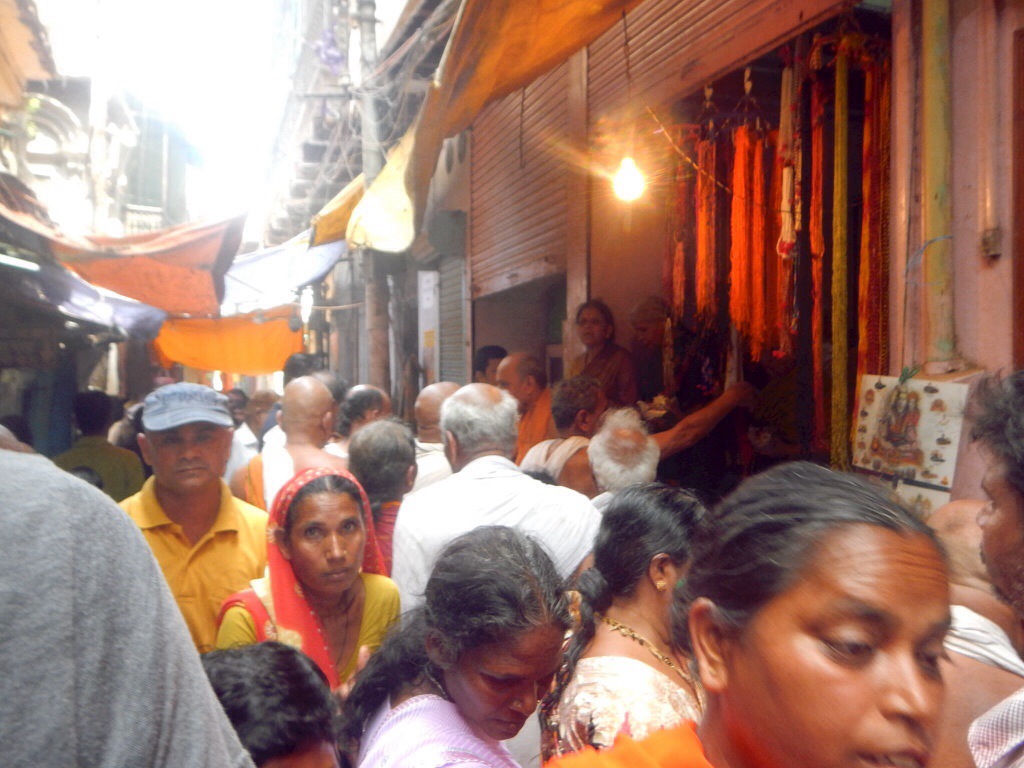
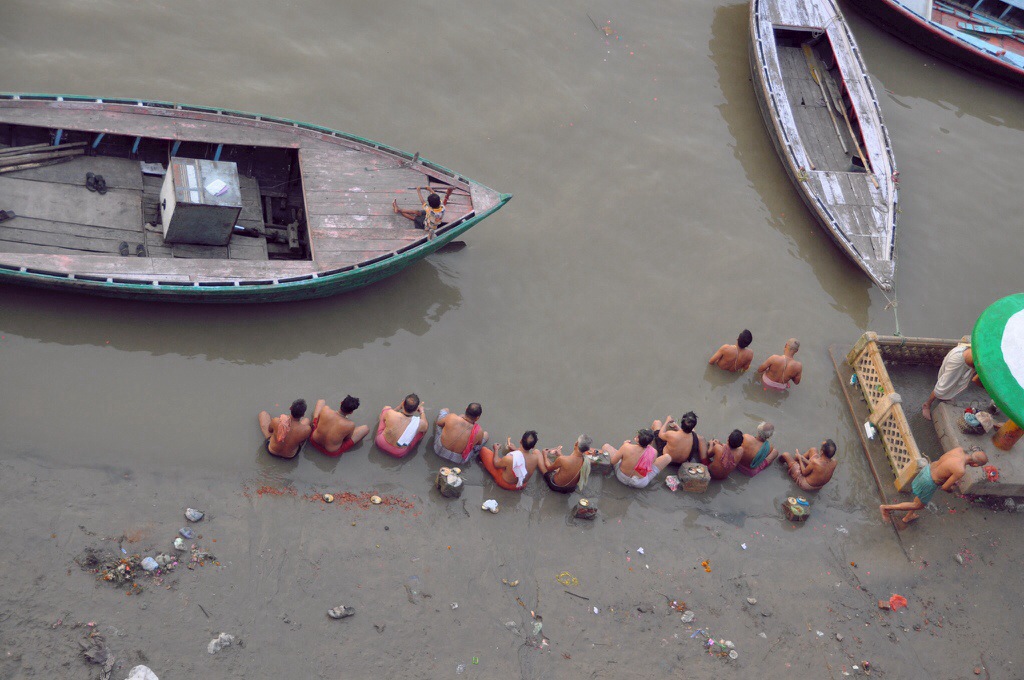
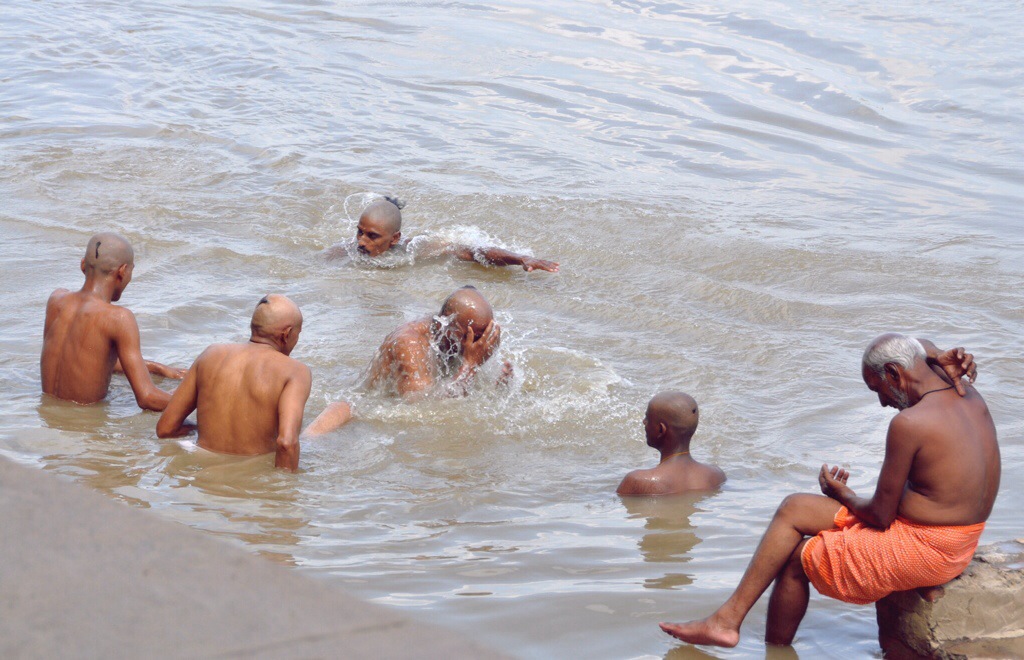
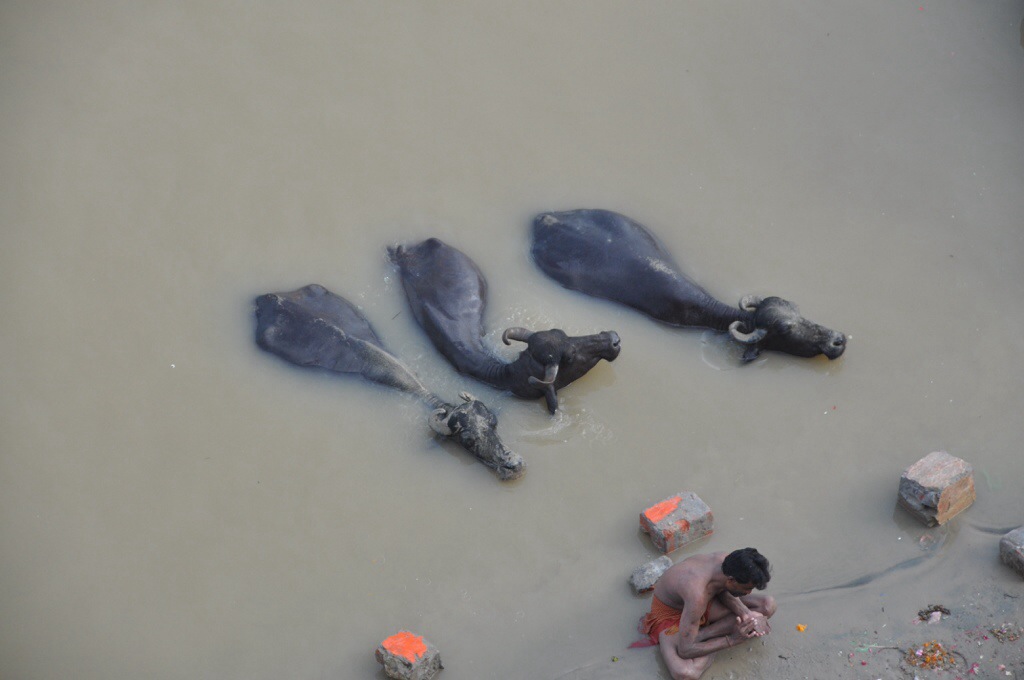
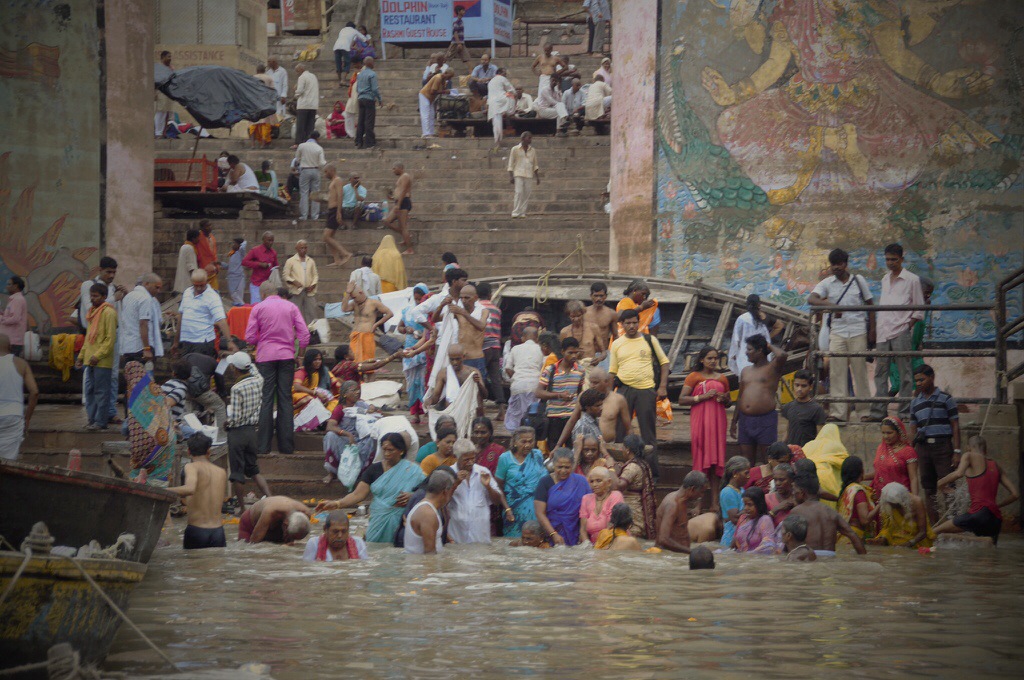
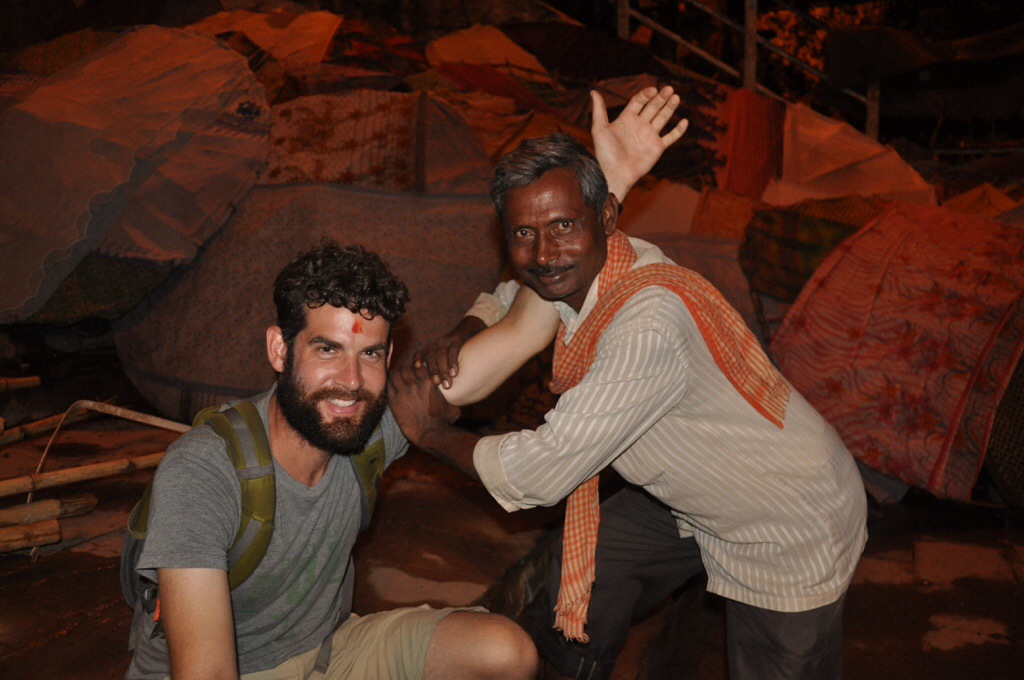

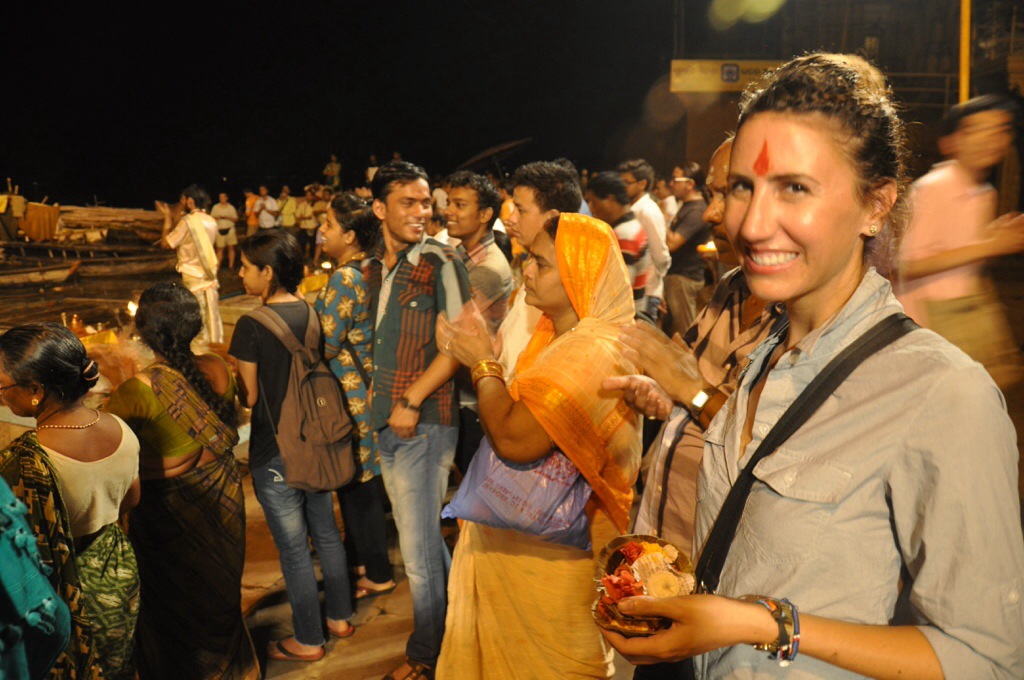
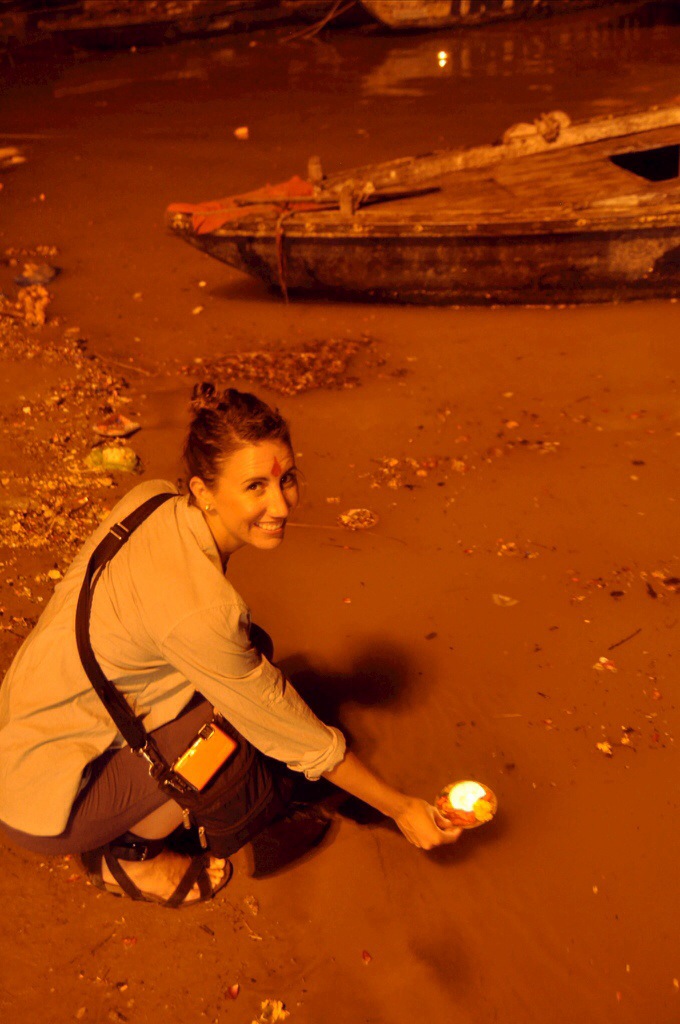

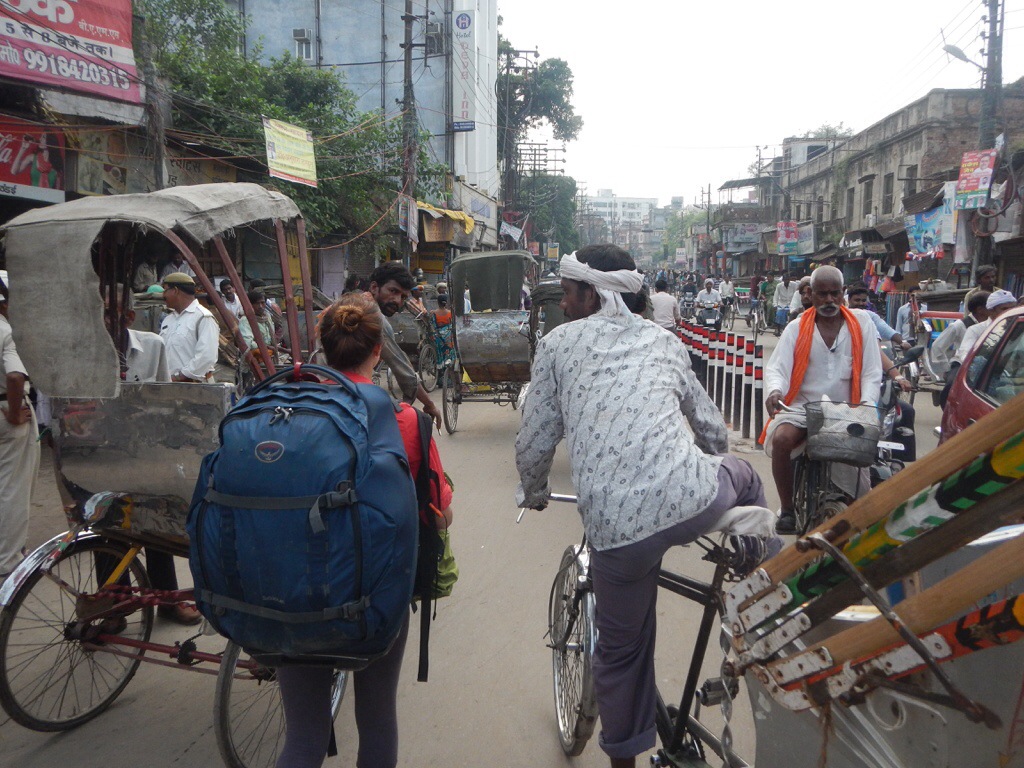
Very interesting! Those lassis look a lot different than the mango lassis we order in Indian restaurants. I must be super faint-hearted because just reading about the noise, crowds, traffic urine and cow shit smells makes me a little queasy. The curries weren’t too spicy for you?
They weren’t bad, but we’re pretty sure we got he tourist versions. I asked for a dish to be made spicy one time, and it was veeery spicy.
Mango Lassi is one of my all time favorite drinks!
Jami, thanks for the wonderful introduction to your first Indian city… what a great description & wonderful photos.
Also, I can’t believe how the two of you dealt with the long trip into India… the many modes of transportation, the difficulty getting tickets, continuing to move forward even when virtually lost in the city… you guys have nerves of steel.
Dad, the mango lassie from Blue Lassi were nothing like the ones in the US. More smoothie and impossible to drink. Maybe you should ask for the local version next time…